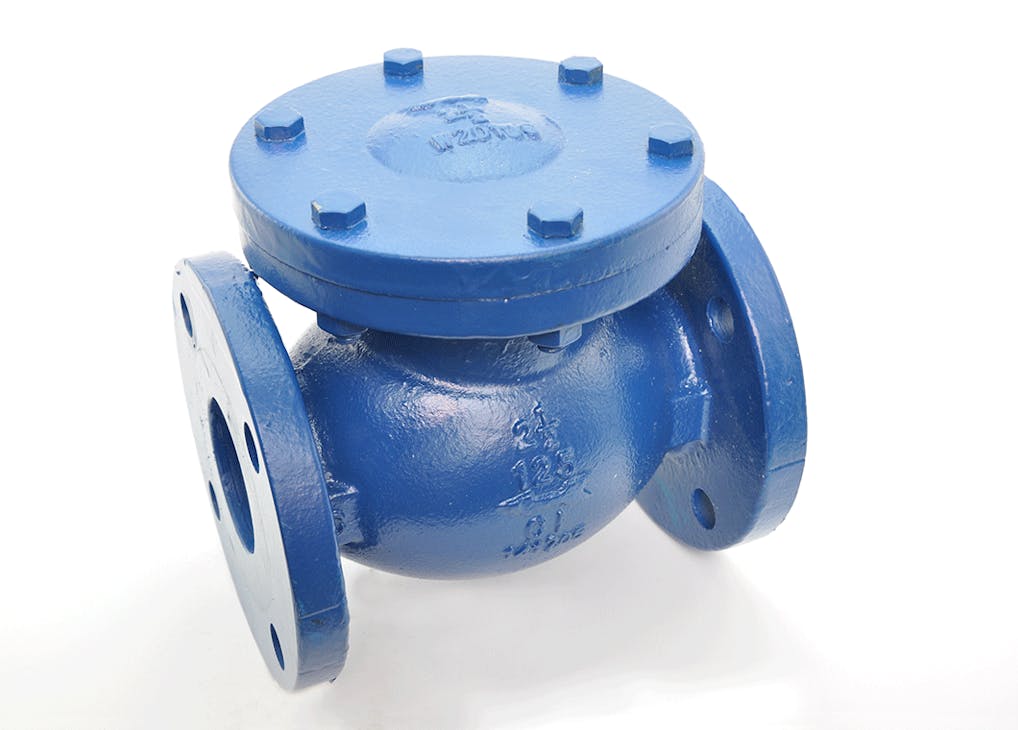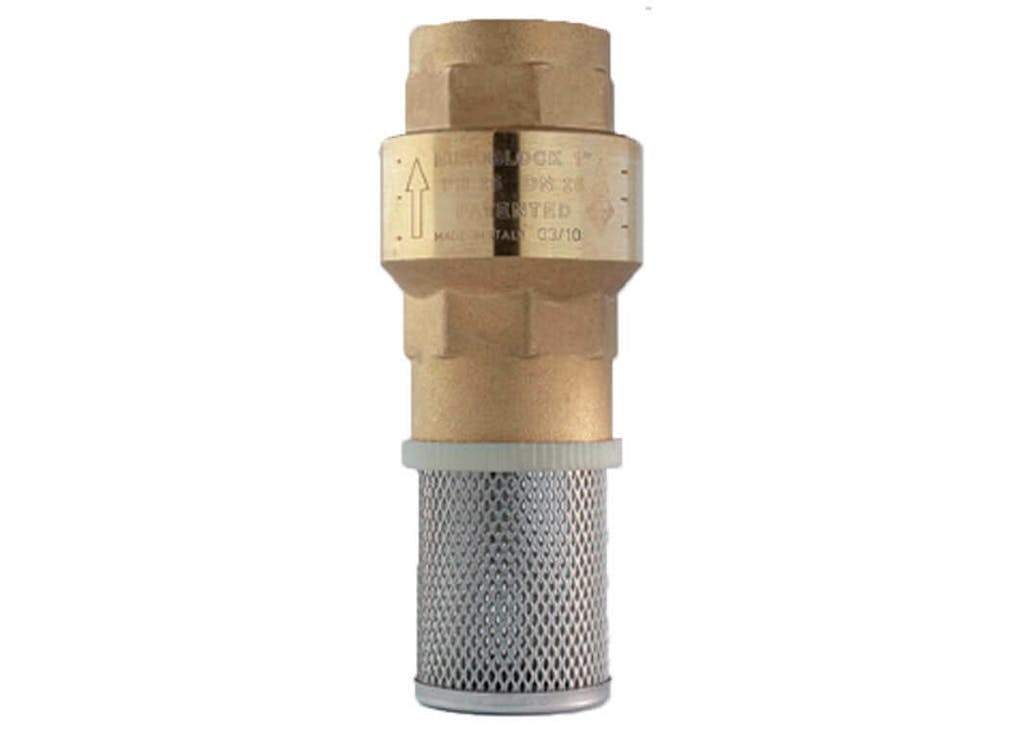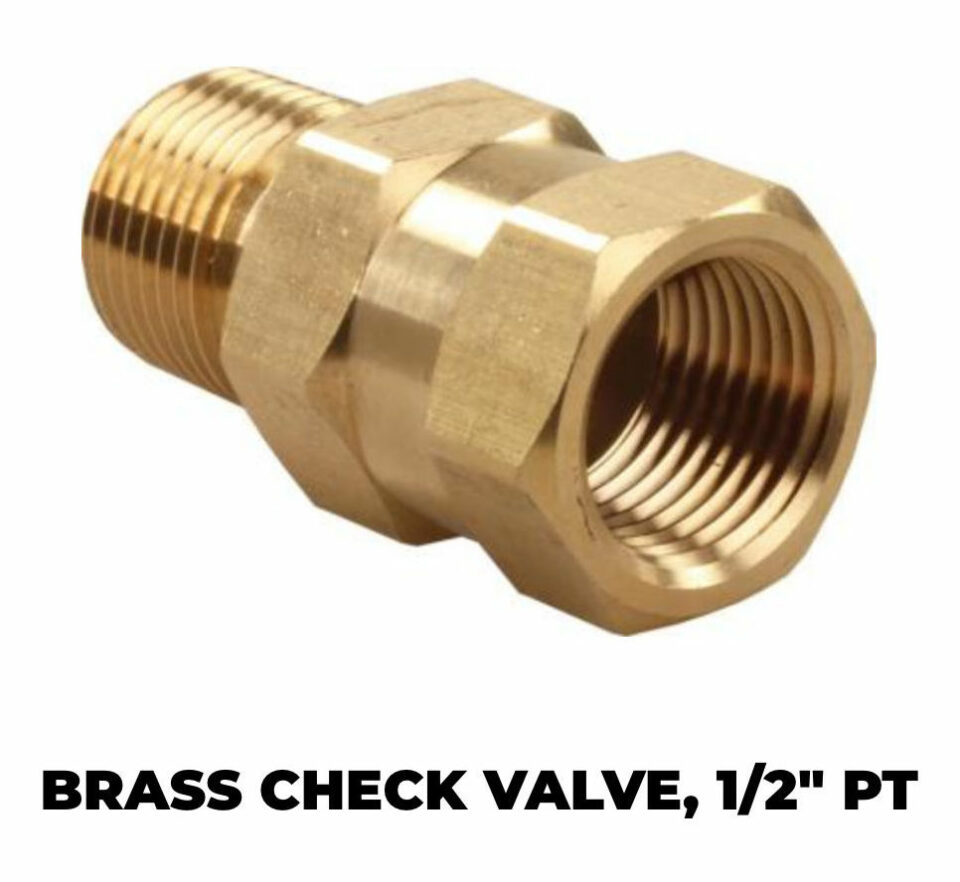Check valves are fluid control devices that allow the flow of media in one direction, while restricting flow in the opposite direction. This seemingly simple function is crucial in various piping systems. Check valves are used in various applications across numerous industries including process manufacturing.
How do check valves work?
There are various types of check valve designs that work best in different applications. However, they all serve the same purpose and have the same working principle. Check valves typically have two ports, an inlet and an outlet, and a closing mechanism that varies by check valve type.
One of the most distinct characteristics of check valves is that they are self-operating and don’t require outside interference. They operate automatically using differential pressure to either open or close.
In their natural position, check valves are closed, with the closing mechanism and valve seat held in place by either a spring or gravity. Therefore, to open the valve, pressure/force is required to overcome the closing force of the spring or gravity. Flowing media has pressure, and the kinematics of this pressure serve to open the valve. When the inflow pressure is higher than the pressure on the outlet side of the valve, it opens, allowing the media to flow through. If the pressure on the outlet side becomes higher, the valve immediately shuts off, preventing reverse flow.
It takes more than just a difference in pressure to open a check valve. There is a specific minimum inflow pressure that is required to open it. This is known as the cracking pressure. It can be defined as the exact value of the minimum pressure needed to “crack open” the valve enough to permit detectable flow. The cracking pressure for check valves varies and is usually specified by the valve manufacturer. It is an important selection criterion and is influenced by various factors including the closing mechanism, valve size, valve design and material. Whenever the inflow pressure drops below the rated resealing pressure the valve immediately shuts off. The rated resealing pressure of a valve is not always the same value as the cracking pressure.
Applications of check valves
Check valves ensure that media flow is one-directional. This broadly defined purpose is applied in various applications. Some of these applications are as follows.
Prevention of contamination and unwanted mixing of media
Also known as reverse flow, backflow is an unwanted piping system phenomenon in which media flows in the wrong direction. One of the implications of this phenomenon is contamination/mixing of upstream media. Examples of applications in which this can have severe consequences are in water treatment plants and chemical production plants where media flows from one reservoir to another with different content. Check valves are also applied in some applications to prevent the flow of media back to the source. An example of such applications is sewer systems. Sewage is meant to flow in one direction — toward the treatment plant. Reverse flow in such a system would cause sewage to flow back into buildings and streets. All these can be prevented using a simple check valve.
Prevention of damage to upstream equipment
Another implication of backflow is damage to upstream equipment. Backflow can easily damage filters, pumps, water meters, HVAC compressors and other expensive equipment built for unidirectional flow.
Another grave equipment-damaging effect that often results from backflow is water hammer. Water hammer is a pressure surge that occurs when a flowing fluid is forced to stop or change direction abruptly. The momentum caused by this can damage or completely destroy equipment. It can also create hazardous leaks and can cause personal injury. Water hammer can be prevented by simply installing an adequately sized check valve along the flow path.
If downstream flow abruptly stops, or changes direction in a pipe containing a check valve, the momentum created would cause the pressure on the outlet side to be higher than that on the inlet side. This causes the check valve to shut off, preventing the water hammer’s momentum from reaching upstream equipment. Check valves, though relatively inexpensive, can protect costly equipment, prevent injury and save money and time in the process. Spring-loaded valves are best suited for this application.
Prevention of drainage
When fluid is being pumped from a suction reservoir to a discharge reservoir, reverse flow is highly likely to occur if the pump is stopped or fails. Check valves prevent drainage in such scenarios by blocking flow immediately after the inlet pressure provided by the pump drops.
Low-pressure relief
Check valves are also used as pressure relief valves in low-pressure gas applications. In such applications, preventing reverse flow is not crucial. Instead, the ability of the valve to self-operate and direct the flow is of utmost importance. For pressure relief, check valves are installed with the inlet facing the pressure system and the outlet facing out. When the system pressure reaches cracking pressure, the valve opens, releasing some of the media until the system’s pressure is below cracking pressure.
Vacuum breakers
In this application, check valves perform the reverse of their function in pressure relief. Check valves are used as vacuum breakers to relieve negative pressure by allowing the inflow of air. The valve is installed with the outlet facing the vacuum system and the inlet facing the surroundings. When a vacuum is created in the system, the difference between the vacuum pressure and the atmospheric pressure causes the valve to open, allowing air or any surrounding fluid to flow in.
An example of a scenario in which a vacuum breaker is needed is when fluid is being pumped out of a closed system. As the fluid flows out, a vacuum is created, restricting flow. The check valve opens to break the vacuum and closes when the vacuum is eliminated.

Types of check valves
There are various types of check valves that vary in build. These work best in different applications. Types of check valves include the following:
Swing check valves. These valves are designed with a disc hinged at the top of the valve body. In-flowing fluid with sufficient pressure pushes the disc open. It closes when the inflow pressure isn’t sufficient or when there’s reverse flow. Swing check valves can work with different types of media.
Ball check valves. These valves use a linearly moving sphere to restrict flow. The ball is lifted off its seat when cracking pressure is reached. Ball check valves are commonly employed in viscous fluid applications and high-velocity applications where water hammer damage can be severe. They are also used for chromatography pumps and metering pumps. Ball check valves, like some piston check valves, are classified as lift check valves.
Foot check valves. Foot check valves operate using a linearly moving piston. However, their distinguishing feature is the filter that is attached to the suction side. These valves are crucial in applications involving solid matter that can cause damage to equipment. They are commonly used in fuel pumps, irrigation pumps and other equipment susceptible to particles.
Other types of check valves include tilting disc, dual disc, silent, restrictor and Y-type check valves.

Check valve selection criteria
Check valves are crucial in protecting piping and fluid control equipment. They are reliable, cost-effective and easy to install. Further, they can save equipment from costly damage. However, all these benefits would be lost if the wrong check valve for an application is selected. The following are the factors that must be considered before selecting a check valve:
Cracking pressure. A properly sized valve with the right cracking pressure must be installed. If the cracking pressure is too high, the flowing media may be unable to open it. Likewise, if the cracking pressure is too low, the check valve would not be able to function as a valve.
Size. When it comes to choosing between different check valve designs, there are multiple considerations to bear in mind, aside from their size matching the associated piping and equipment — the space they take up in the system, and their intrinsic weight, especially as they become larger.
Orientation. Some check valves are designed to be installed horizontally, while others are installed vertically. Check valves cannot be installed in a different orientation than the one they were built for.
Material. The material selected must be compatible with the fluid to be carried. It must also be able to withstand operating temperatures. Valve material refers to both the valve body and valve seat. Check valves may be made of stainless steel, brass, polypropylene, polyvinyl chloride, etc.
Operating pressure. Different check valve builds are designed for different levels of pressure and flow velocity.
A meticulous consideration of these factors is crucial in selecting the right valve type.
Gilbert Welsford Jr is the founder of ValveMan.com and a third-generation valve entrepreneur. He has learned valves since a young age and has brought his entrepreneurial ingenuity to the family business in 2011 by creating the online valve store ValveMan.com. Gilbert’s focus is building on the legacy his grandfather started, his father grew, and he has amplified.


